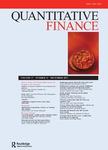版权所有:内蒙古大学图书馆 技术提供:维普资讯• 智图
内蒙古自治区呼和浩特市赛罕区大学西街235号 邮编: 010021

作者机构:Univ Edinburgh Maxwell Inst Math Sci Sch Math Edinburgh Midlothian Scotland Univ Nova Lisboa FCT CMA Lisbon Portugal
出 版 物:《QUANTITATIVE FINANCE》 (定量金融)
年 卷 期:2018年第18卷第6期
页 面:983-1001页
核心收录:
学科分类:02[经济学] 1202[管理学-工商管理] 0201[经济学-理论经济学] 0701[理学-数学]
基 金:Maxwell Institute Graduate School in Analysis and its Applications UK Engineering and Physical Sciences Research Council [EP/L016508/01] Scottish Funding Council Heriot-Watt University University of Edinburgh Fundacao para a Ciencia e a Tecnologia (Portuguese Foundation for Science and Technology) [UID/MAT/00297/2013]
主 题:Likelihood inference Credit risk Transition probability matrices EM algorithm Markov Chain Monte Carlo
摘 要:Bond rating Transition Probability Matrices (TPMs) are built over a one-year time-frame and for many practical purposes, like the assessment of risk in portfolios or the computation of banking Capital Requirements (e.g. the new IFRS 9 regulation), one needs to compute the TPM and probabilities of default over a smaller time interval. In the context of continuous time Markov chains (CTMC) several deterministic and statistical algorithms have been proposed to estimate the generator matrix. We focus on the Expectation-Maximization (EM) algorithm by Bladt and Sorensen. [J. R. Stat. Soc. Ser. B (Stat. Method.), 2005, 67, 395-410] for a CTMC with an absorbing state for such estimation. This work s contribution is threefold. Firstly, we provide directly computable closed form expressions for quantities appearing in the EM algorithm and associated information matrix, allowing easy approximation of confidence intervals. Previously, these quantities had to be estimated numerically and considerable computational speedups have been gained. Secondly, we prove convergence to a single set of parameters under very weak conditions (for the TPM problem). Finally, we provide a numerical benchmark of our results against other known algorithms, in particular, on several problems related to credit risk. The EM algorithm we propose, padded with the new formulas (and error criteria), outperforms other known algorithms in several metrics, in particular, with much less overestimation of probabilities of default in higher ratings than other statistical algorithms.